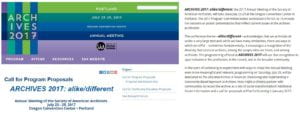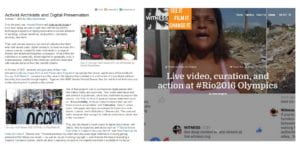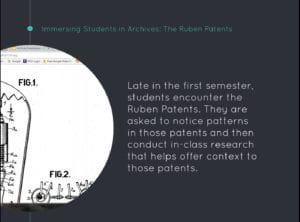To explore the theme of diversity, inclusion, and social justice in archives and STEM, we first broke it down into the parts we knew best. I (Lindsay) gave a brief overview (link to slides) of these issues as they relate to archives and Chris tackled the STEM angle [link to slides].
Prior to our meeting, I assigned the group two readings to get a sense of inclusion and social justice conversations happening in the archival profession. Ramirez’s (2015) article is a direct response to Greene (2013). I like these two articles because they get at a few aspects of archives in respect to inclusion and social justice: collection development, access, advocacy, and agency. I was most struck by Greene’s assertion, “Engaging broadly in politics as professionals makes no more sense to me when applied to archivists than it would if applied to accountants, computer programmers, or engineers” (p 308). But aren’t all of these professions wrapped up in politics, and more broadly, the social world? This sense that science and data exist as truths outside of social or political influence is one that has been rebutted by many fields, including Science Studies, Anthropology, and Philosophy.

The Society of American Archivists is explicitly addressing inclusion at the 2017 annual conference. And yet, questions about how inclusive the conference itself, which requires travel, registration fees, and a membership that is 89% white (SAA Membership Needs and Satisfaction Survey, 2012) remain.
Although Greene seems to think that one must become an activist archivist in order to actively apply considerations of diversity, inclusion, and social justice to collection development and access policies, I disagree. As archivists, we are constantly making decisions about who and what belong in our collections. Our goal is not simply to collect everything and we may not have the time or resources to do as much outreach as we like, but critically evaluating our choices through the lens of diversity, inclusion, and social justice does not mean that we’re picking a political side (as Greene sometimes suggests), it means we’re making our collections stronger.

Following our discussions of diversity, inclusion, and social justice in archives and STEM, we changed gears and took a look at a new idea for a classroom activity involving STEM archives.

Nicole presented (link to slides) an idea to use a series of patents from the Poly Archives in Expository Writing Program classes. All of the patents are by the same inventor, Samuel Ruben. Looking at a sample of Ruben’s patents, which span more than 40 years, students will be asked to find patterns, to think about context and audience. They will also be asked to think about what the patent document is particularly good at telling them, and what it is not so good at telling them, which opens the door to discussing additional formats in the collection, such as photographs, magazine articles, correspondence, and advertisements.
Recommended Reading:
Greene, M. (2013). A critique of social justice as an archival imperative: What is it we’re doing that’s all that important? The American Archivist, 76(2), 302-334.
Ramirez, M.H. (2015). Being assumed not to be: A critique of whiteness as an archival imperative. The American Archivist, 78(2), 339-356.
Wendy Chen’s article “On software and the persistence of visual knowledge,” NPR’s The Forgotten Female Programmers Who Created Modern Tech, and Nathalia Holt’s The Rise of the Rocket Girls came up when we talked about female computers.
Women In STEM Tend to Have More Collaborators But Are Underrepresented, Study Suggests.
Reuters (11/9, Doyle) reports women in STEM departments “tend to have a wider range of collaborators than men, but are still significantly underrepresented, especially in genomics, according to a new study (11/4)” published in PLoS Biology. Jevin West, a “science of science” researcher at the University of Washington, said, “If indeed there is a difference by gender in collaborative patterns and behavior, this is something not to be ignored. The infrastructure of science depends on these collaborations and if women are being excluded for institutional or cultural reasons, the National Science Foundation and the National Institutes of Health needs to address this issue head on.”